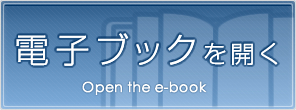For the Safety Navigation In Japanese Coastal Waters page 15/120
このページは For the Safety Navigation In Japanese Coastal Waters の電子ブックに掲載されている15ページの概要です。
秒後に電子ブックの対象ページへ移動します。
「電子ブックを開く」をクリックすると今すぐ対象ページへ移動します。
概要:
- 11 -Fig. 1-11 Meanders of Kuroshio CurrentThe large-scale (type A) meander of the Kuroshio Current is now regarded as one ofregular passage of the current, because it has become common in recent yea....
- 11 -Fig. 1-11 Meanders of Kuroshio CurrentThe large-scale (type A) meander of the Kuroshio Current is now regarded as one ofregular passage of the current, because it has become common in recent years.(2) Oyashio CurrentThe Oyashio Current (refer to Fig. 1-12), which is also called the Chisima Ocean Currentor Kurilian Current, is one of the currents forming the west coast current of the sub-tropicalcircling system and is regarded as a typical cold current in Japanese waters. The OyashioCurrent, however, is comparatively weak in terms of its flow energy and frequently becomesindistinct in relation to its watercourse. The main current of the Oyashio flows westwardalong the Pacific side of the Kurilskie Ostrova, reaching the eastern section of Hokkaidowhile sending forth southward branches in the vicinity of 150° E to 15° E and also of 146° E.to 147° E. It then advances southwestward along the Pacific side of the eastern sectionabove, and then veers due south in the sea area off Erimo Misaki toward the sea area offSanriku.The main current then flows southward along the shore approximately 50 M off Sanriku.When it reaches the sea area of 40° N to 42° N, the main current flows against the northwardbranch of the Kuroshio Current to form a peculiar boundary between these two currents. Itthen flows eastward, meandering through the sea area east of Honshu. The southwardOyashio Current becomes strongest and reaches a sea area near Kinkazan in March through

